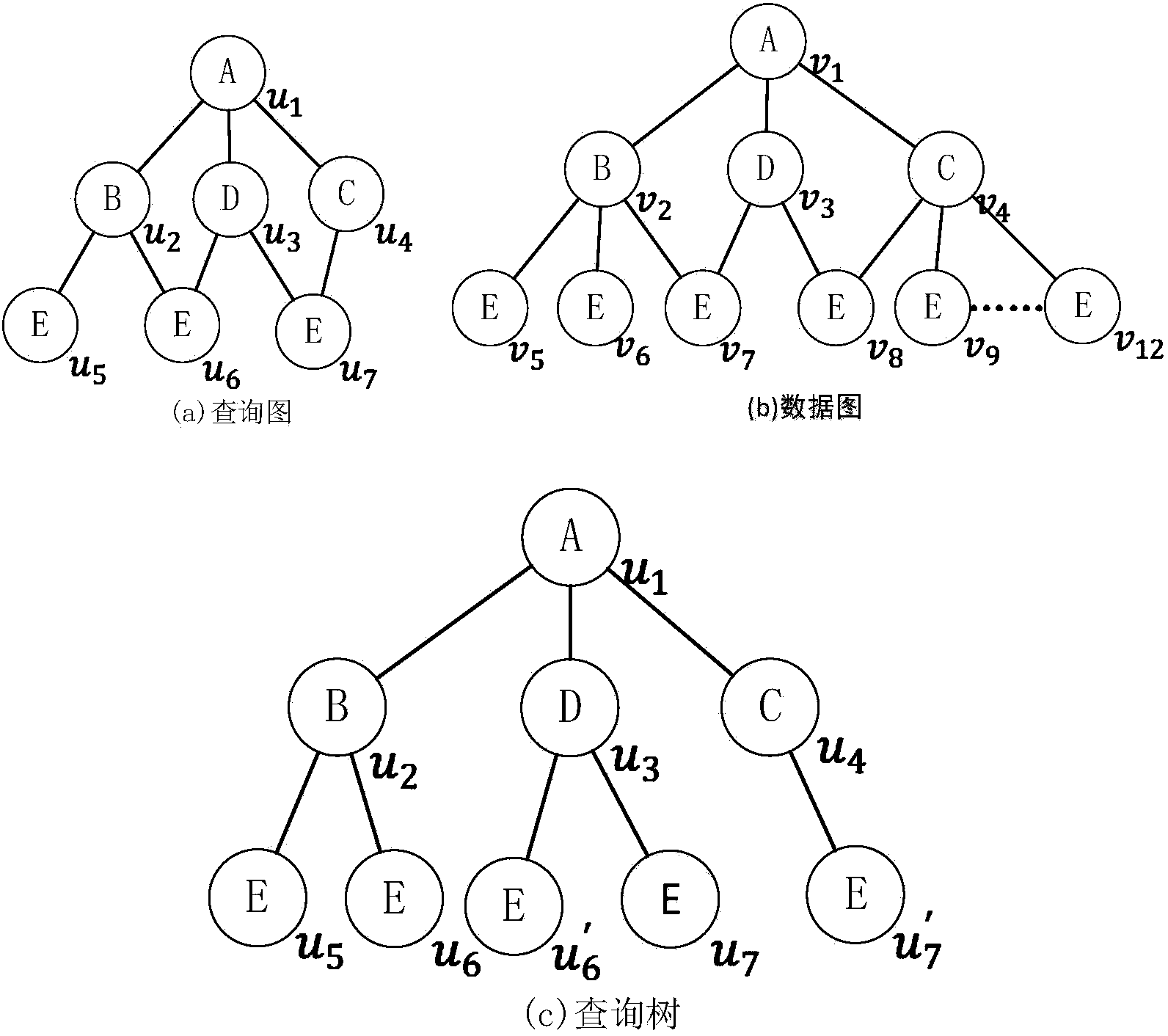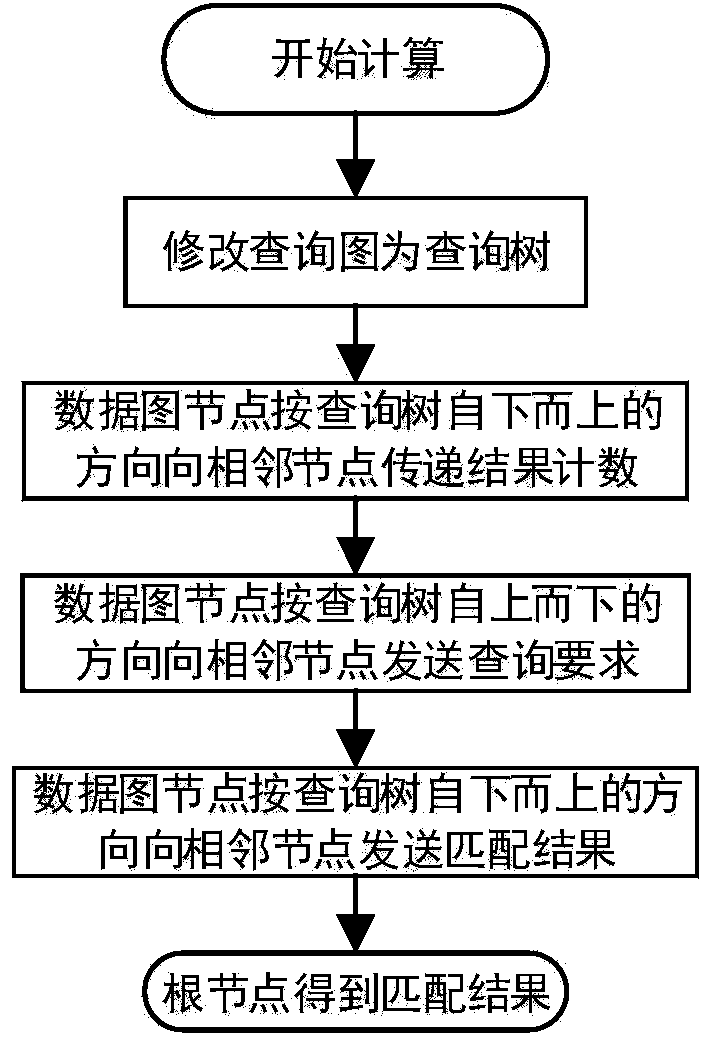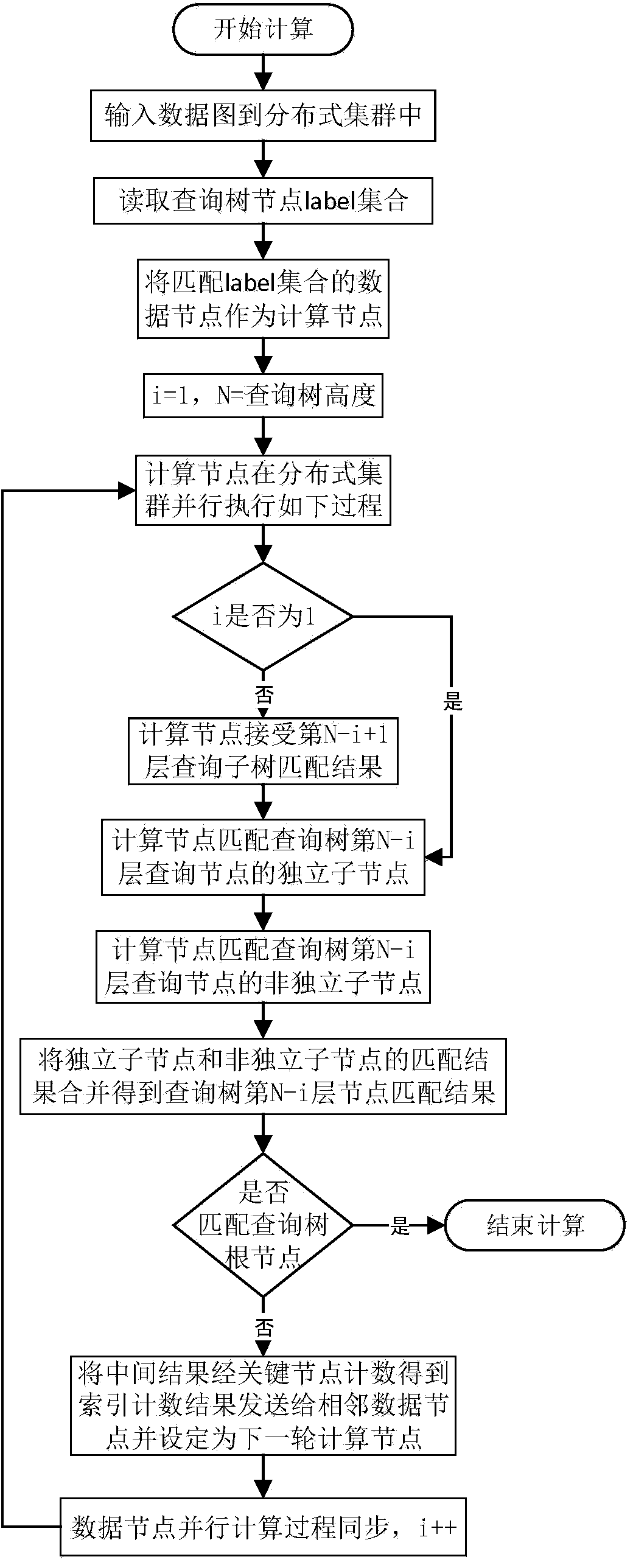Subgraph matching query method
A query method and seed map technology, applied in the query field, can solve the problems of low query efficiency and achieve the effects of saving communication costs, reducing communication traffic, and reducing memory usage
- Summary
- Abstract
- Description
- Claims
- Application Information
AI Technical Summary
Problems solved by technology
Method used
Image
Examples
example 1
[0088] by figure 1 As an example, the input is a query graph figure 1 (a), data graph figure 1 The average degree of nodes in (b) is 2.
[0089] [1] Enumerate all nodes as the root node of the tree;
[0090] by figure 1 (a) as an example. enumerate u 1 -u 7 as the root node of the tree.
[0091] [2] Use the method of breadth traversal to obtain the query tree corresponding to all root nodes;
[0092] See Method 1.1 for details.
[0093] [3] For all candidate query trees generated, select the one with the smallest value as the final query tree;
[0094] by figure 1 (b)(c) as an example. data graph figure 1 The average degree of nodes in (b) is 2, according to formulas (1) and (2), we get figure 1 (a) The corresponding query tree is figure 1 (c) shown.
[0095] Method 1.1: Given a root node, use breadth traversal to generate a query tree and output the query tree
[0096] Input: query graph, root node
[0097] output: query tree
[0098] [1] Use the access set ...
example 11
[0106] Example 1.1: Take figure 1 u in (a) 1 As the root node for example:
[0107] [1] Use the edge access set evis to indicate whether the edge (u, v) is in the tree, use the point access set nvis to indicate whether the node has been visited, and use the first-in-first-out queue q as the queue for breadth traversal;
[0108] In the initialization phase, evis, nvis, and q are all empty.
[0109] [2] Add the root node of the query tree to the queue q;
[0110] will u 1 Join queue q.
[0111] [3] Take out the team head node u, and enumerate its adjacent points v in turn;
[0112] to u 1 as an example. visit u in turn 1 Adjacent point u 2 , u 3 , u 4 .
[0113] [4] If the edge (u, v) is already in the tree, skip the edge (u, v);
[0114] to u 5 as an example. u 5 The adjacent point of u is 2 , at this time (u 2 , u 5 ) This edge is visiting u 2 When the adjacent points of the node have been added to the tree, they are skipped.
[0115] [5] If the edge (u, v...
example 2
[0141] by figure 1 (b)(c) as an example.
[0142] [1] Input a data graph into a distributed cluster, and each machine stores a part of the subgraph. Network communication is used between adjacent nodes across machines, and memory communication is used between other nodes;
[0143] Assuming that there are three clusters, the figure 1 (b) v 1 , v 2 , v 3 , v 4 a group, v 5 , v 6 , v 7 , v 8 a group, v 9 , v 10 , v 11 , v 12 A group is input into three clusters respectively, from v 1 to v 2 Using memory communication, from v 1 to v 5 Use network communication.
[0144] [2] Obtain the query tree height - 1 layer node label set;
[0145] exist figure 1 In (c), the obtained label set is {B, D, C}.
[0146] [3] Select the data nodes that meet the label set as the computing node set;
[0147] exist figure 1 In (b), the computing node set is v corresponding to {B, D, C} 2 , v 3 , v 4 .
[0148] [4] i=1, N=query tree height, root node height is 1;
[0149] i=...
PUM
 Login to View More
Login to View More Abstract
Description
Claims
Application Information
 Login to View More
Login to View More - R&D
- Intellectual Property
- Life Sciences
- Materials
- Tech Scout
- Unparalleled Data Quality
- Higher Quality Content
- 60% Fewer Hallucinations
Browse by: Latest US Patents, China's latest patents, Technical Efficacy Thesaurus, Application Domain, Technology Topic, Popular Technical Reports.
© 2025 PatSnap. All rights reserved.Legal|Privacy policy|Modern Slavery Act Transparency Statement|Sitemap|About US| Contact US: help@patsnap.com



